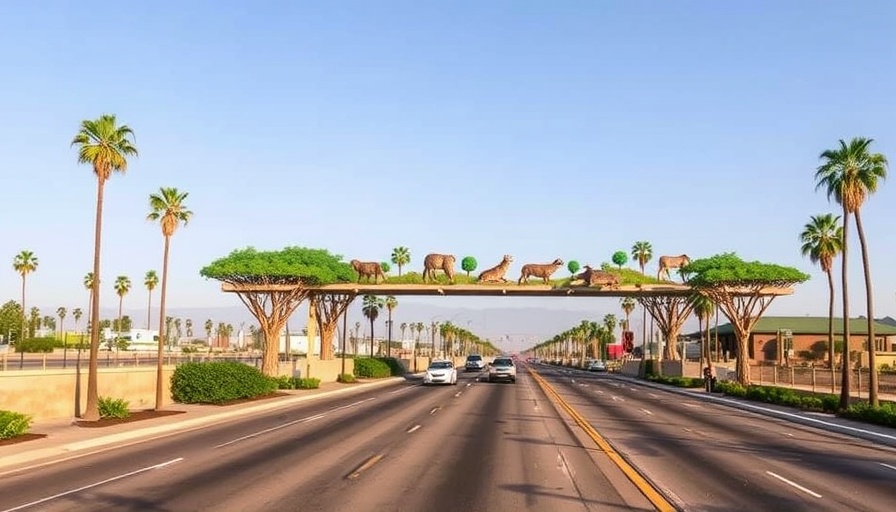
Transforming Urban Spaces: The Wallis Annenberg Wildlife Crossing
In the heart of bustling Los Angeles, an extraordinary initiative is gaining momentum: the Wallis Annenberg wildlife crossing over the 101 freeway. This ambitious endeavor aims to bridge two segments of the Santa Monica Mountains, reconnecting wildlife habitats that have been separated for far too long. It stands as a testament to innovation in urban planning and ecological sustainability, demonstrating that even the busiest highways can be redeemed for conservation efforts.
Connecting Nature and Progress
As more than 300,000 vehicles traverse the 101 every day, the crossing seeks to safeguard local wildlife, from majestic mountain lions to delicate butterflies. According to Beth Pratt, regional director of California's National Wildlife Federation, this project isn’t just about connecting land; it’s about restoring hope. The recent addition of native soil to the crossing signifies a vital step towards creating an enriched habitat designed to encourage wildlife movement and growth.
Integrating Natural Elements
This landmark crossing, spanning 210 feet in length and 174 feet in width, is being constructed with a thoughtful approach that incorporates local flora and fauna. With nearly an acre of native plants on both sides and sound walls to shield nocturnal animals from highway disturbances, the crossing aims to inspire similar initiatives nationwide. Governor Gavin Newsom emphasized its dual purpose of enhancing road safety while contributing to the ecosystem's revival.
The Importance of Wildlife Crossings
Wildlife crossings, such as the Wallis Annenberg project, not only protect animals from traffic but also verify that wildlife corridors can decrease costs associated with animal-vehicle collisions. Research indicates that these structures can economically benefit urban environments while promoting biodiversity. The meticulous design aims to blend seamlessly into the natural scenery, sending a powerful message that humans can actively participate in protecting our planet.
Inspiration from Nature
The Wallis Annenberg wildlife crossing is a powerful reminder that nature and urban life can coexist harmoniously. As individuals considering investments in properties around Dumfries and the broader Los Angeles area, understanding the integration of such ecological projects may shape not only property values but also provide insight into sustainable living practices. Choosing neighborhoods that prioritize green initiatives often reflects future trends, making them valuable for property investors.
The story of the wildlife crossing is still unfolding, providing an opportunity for us all to ponder the balance between infrastructural development and the natural world. It’s a chance to invest in a home that supports not just your needs but also the thriving ecosystems that surround them. So, as you explore the property landscape, think about how you can contribute to a sustainable future.
 Add Row
Add Row  Add
Add 





 Add Row
Add Row  Add
Add 








Write A Comment